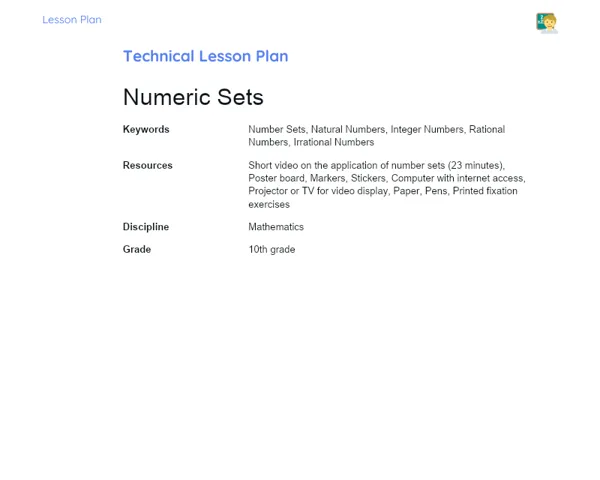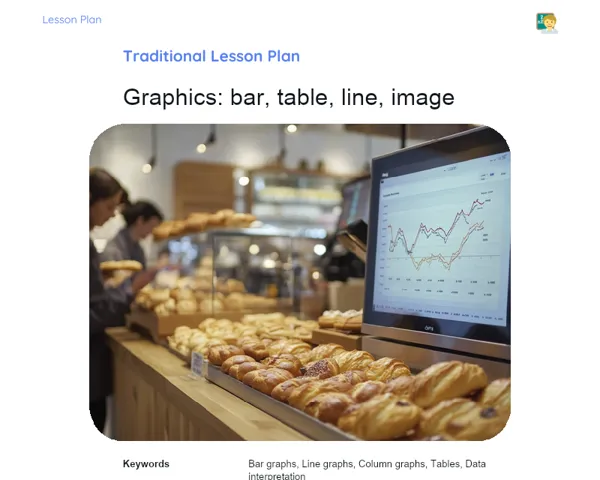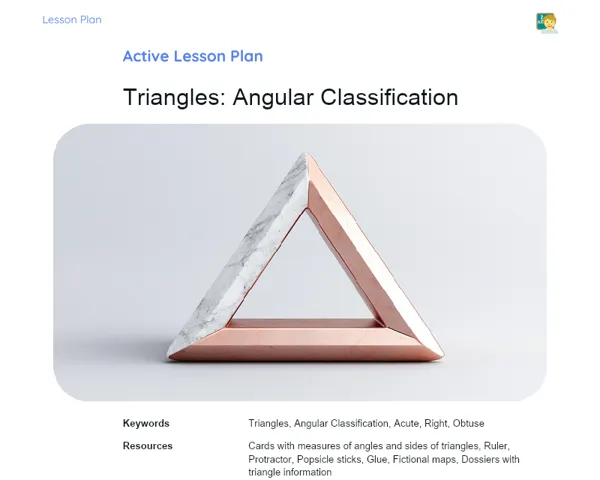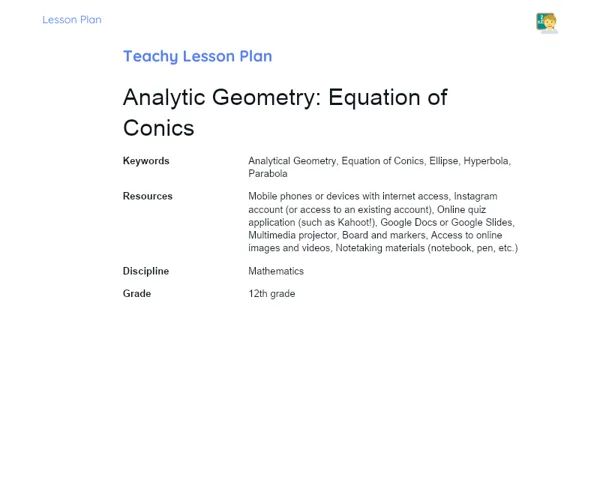Lesson Plan Teknis | Theoretical Probability
| Palavras Chave | Theoretical Probability, Simple Events, Dice, Coins, Playing Cards, Critical Thinking, Problem Solving, Job Market, Practical Experiments, Meaningful Learning |
| Materiais Necessários | Dice, Coins, Decks of cards, Projector, Computer with internet access, Educational video on probability, Whiteboard and markers, Papers for recording results, Pens |
Objective
Duration: 10 - 15 minutes
This stage aims to introduce learners to the fundamental concepts of theoretical probability, highlighting how these skills are practically relevant in everyday life and the job market. By mastering the calculation of probabilities for simple events, learners will be equipped to make informed choices in various contexts, from playing games to professional scenarios, thereby deepening their understanding of mathematics.
Objective Utama:
1. Grasp the basic concepts of theoretical probability.
2. Calculate the probability of simple events using dice, coins, and playing cards.
Objective Sampingan:
- Develop critical thinking and problem-solving skills.
Introduction
Duration: 15 - 20 minutes
This stage is designed to introduce learners to the fundamental concepts of theoretical probability, showing how relevant these skills are in daily life and the job sector. Learning to calculate the probability of simple events will enable learners to make informed choices across various situations, promoting a deeper, more applicable understanding of mathematics.
Curiosities and Market Connection
Did you know that probability is vital for a range of careers? Financial analysts rely on probability to predict stock market trends, while software developers use it for algorithms and artificial intelligence. Even in sports, statisticians use probability concepts to enhance team performance.
Contextualization
Probability is a mathematical tool we use every day, often without realising it. From predicting the weather to deciding whether to grab an umbrella, or understanding the odds of winning a board game, knowing about probability helps us make better decisions and assess risks wisely.
Initial Activity
To kick things off, write a thought-provoking question on the board: 'If you flip a coin 10 times, how many times do you expect heads to come up?' Let learners discuss in pairs and then share their thoughts. After that, show a brief 3-minute video that explains the fundamental concept of probability in everyday situations.
Development
Duration: 65 - 70 minutes
This stage is aimed at consolidating learners' understanding of theoretical probability through practical and engaging activities. They will get to apply the concepts learned in real-life contexts, encouraging meaningful and contextual learning. Moreover, the fixation exercises will enable the assessment of their grasp of the concepts, ensuring everyone is keeping pace with the material.
Topics
1. Concept of theoretical probability
2. Possible and favourable events
3. Calculating probability with dice
4. Calculating probability with coins
5. Calculating probability with playing cards
Thoughts on the Subject
Encourage learners to reflect on how probability is applied in various aspects of everyday life and the job market. Ask them how the ability to calculate probabilities might influence critical decisions, be it in finance, technology, or gaming. Get them to think of instances where they have applied probability without even realising it.
Mini Challenge
Practical Probability Challenge
Learners will be organised into groups to carry out practical experiments calculating the probability of simple events using dice, coins, and playing cards.
1. Divide the class into groups of 4 to 5 learners.
2. Provide each group with a set of materials: a die, a coin, and a deck of cards.
3. Instruct each group to conduct the following experiments:
4. Dice: Each group will roll the die 30 times and record their outcomes. They will then calculate the probability of rolling each number from 1 to 6.
5. Coins: Each group will flip the coin 50 times and document the results for 'heads' and 'tails'. They will then calculate the probability for each side.
6. Playing Cards: Each group will randomly draw a card from the deck 20 times and record their results. They will then calculate the probability of drawing a specific card (e.g., an ace or a heart).
7. After the experiments, each group will present their outcomes and compare them against the expected theoretical probability.
Encourage the practical application of probability concepts, enhancing skills in recording, analysing, and interpreting data.
**Duration: 45 - 50 minutes
Evaluation Exercises
1. Calculate the probability of rolling a '5' with a die.
2. What is the probability of getting 'heads' when flipping a coin?
3. Determine the probability of drawing a spade from a full deck of cards.
4. If a die is rolled 60 times, how many times can we expect the number 3 to appear?
5. In a deck of cards, what is the probability of drawing a red card or a king?
Conclusion
Duration: 10 - 15 minutes
The aim of this stage is to consolidate learners' learning, ensuring that they recognise how the theory of probability applies in real situations. It will also encourage reflection on the significance of these skills in daily life and the job market, fostering ongoing and meaningful learning.
Discussion
Facilitate an open discussion, prompting learners to share their experiences during the practical experiments involving dice, coins, and playing cards. Inquire about their main challenges and how they addressed them. Reflect together on the importance of calculating probabilities in different contexts, such as forecasting future events, making strategic choices, and analysing potential risks. Ask how their ability to calculate probabilities could be beneficial in their daily lives and career paths.
Summary
Recap the essential concepts covered in the lesson, including the definition of theoretical probability, possible and favourable events, and how to calculate probabilities using dice, coins, and playing cards. Stress the significance of understanding and applying these concepts to tackle practical problems and make informed decisions.
Closing
Conclude by illustrating how the lesson bridged theory and practice, allowing students to engage in practical experiments and compare their findings with the expected theoretical probabilities. Highlight the relevance of the skills developed for the job market and everyday life, where probability analysis is frequently called upon across various situations. End by emphasising the necessity of continually practising these concepts to boost critical thinking and problem-solving capabilities.



